Top conservation books (and a video): my 2009 holiday list
Everyday I receive emails from publishers announcing new books related to conservation. So, I thought it would be fun to come up with my own holiday list of conservation books (why not buy a Christmas present for a nice, Jewish kid from Long Island?). First, I want to outline my criteria for the ideal conservation book for me:
- Academic press - Forget about the pop science titles from the big publishing houses. I like to support the smaller guys putting out obscure books that few will buy, and even fewer will read.
- Balances technical and fun - For me, the ideal book is technical enough to expand my knowledge, but fun enough that I can read it on the beach in Hawaii without ruining my vacation.
- Good page per dollar value - This metric is not as relevant when someone buys a book for me.
- Badassitude - Let's face it; certain books are just cool. These are the titles that you want to display prominently on your bookshelf during dinner parties.
Finally, if you have any books that you want to recommend or if you have read any of the books on my Christmas list, please give us your feedback.
1) The Princeton Guide to Ecology, University of Princeton Press
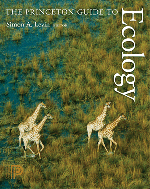
Edited by Simon A. Levin
October 2009 | 848 pp. | 8 x 10 | 25 color illus. 14 halftones. 185 line illus. 22 tables.
Find online ($71 and up)
Publisher's Description: The Princeton Guide to Ecology is a concise, authoritative one-volume reference to the field's major subjects and key concepts. Edited by eminent ecologist Simon Levin, with contributions from an international team of leading ecologists, the book contains more than ninety clear, accurate, and up-to-date articles on the most important topics within seven major areas: autecology, population ecology, communities and ecosystems, landscapes and the biosphere, conservation biology, ecosystem services, and biosphere management.
Why I want it: Steep price, but may be worth it if this book provides one-stop shopping for filling in my knowledge gaps on the numerous sub-specialties of ecology.
2) Top 100 Birding Sites, University of California Press
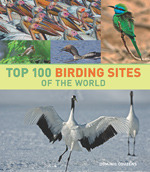
Dominic Couzens
February 2009 | 320 pp. | 10 1/2 x 12 1/2 | 400 color photographs, 101 maps, 1 tables
Find online ($20 and up)
Publisher's Description: This gorgeous book describes the one hundred best bird-watching sites on the planet. Introductory sections give an overview of each continent or region, and then each site is listed and ranked on a country-by-country basis. The entries all include a full description, a list of key species, a map, and information on the best time of year to visit. Lavish color photographs capture rare and elusive species as well as some of the world's best avian spectacles
Why I want it: As a lazy, occasional birder with big aspirations, I need a book like this to get myself off the couch. Plus, UC Press puts out some of the most beautiful books around, even if their product description goes overboard with the self-praise.
3) Mean and Lowly Things: Snakes, Science and Survival in the Congo, Harvard Univ. Press
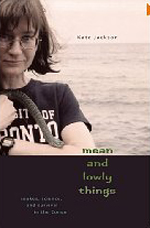 Kate Jackson
Kate Jackson
April 2008 | 336 pp. | 49 color illustrations, 2 maps
Find online (18 dollars and up)
Publisher's Description: In 2005 Kate Jackson ventured into the remote swamp forests of the northern Congo to collect reptiles and amphibians. Her camping equipment was rudimentary, her knowledge of Congolese customs even more so. She knew how to string a net and set a pitfall trap, but she never imagined the physical and cultural difficulties that awaited her.
Culled from the mud-spattered pages of her journals, Mean and Lowly Things reads like a fast-paced adventure story. It is Jackson’s unvarnished account of her research on the front lines of the global biodiversity crisis—coping with interminable delays in obtaining permits, learning to outrun advancing army ants, subsisting on a diet of Spam and manioc, and ultimately falling in love with the strangely beautiful flooded forest.
Why I want it: Released in 2008 but I missed it. What's not to love about Indiana Jones meets ecology field work in one of the most remote and diverse bioregions in the world?
4) The Humans Who Went Extinct: Why Neanderthals Died and We Survived, Oxford Univ.
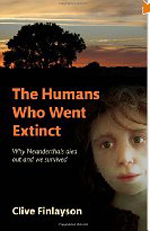 Clive Finlayson
Clive Finlayson
September 2009 | 278 pp. | 4 b&w illustrations, 1 table
Find online ($15 and up)
Publisher's Description: Just 28,000 years ago, the blink of an eye in geological time, the last of Neanderthals died out in their last outpost, in caves near Gibraltar. Thanks to cartoons and folk accounts we have a distorted view of these other humans - for that is what they were. We think of them as crude and clumsy and not very bright, easily driven to extinction by the lithe, smart modern humans that came out of Africa some 100,000 years ago. But was it really as simple as that? Clive Finlayson reminds us that the Neanderthals were another kind of human, and their culture was not so very different from that of our own ancestors. In this book, he presents a wider view of the events that led to the migration of the moderns into Europe, what might have happened during the contact of the two populations, and what finally drove the Neanderthals to extinction. It is a view that considers climate, ecology, and migrations of populations, as well as culture and interaction.
Why I want it: Admittedly, this is not a straight-ahead conservation book, but I find the subject matter fascinating (and haunting). This book has also received many good reviews.
5) Ecology of African Pastoralist Societies, Ohio University Press
 Katherine Homewood
Katherine Homewood
2009 | 320 pp.
Find online ($22 and up)
Publisher's Description: This study presents a comprehensive survey and analysis of the literature and debates surrounding African pastoralist societies by a leading anthropologist of African pastoralism. Katherine Homewood traces the origins and spread of pastoralism on the African continent before examining contemporary pastoralist environments and livelihoods. There are separate discussions of herd biology, pastoralist demography, and the impact of developments and change on pastoralist systems.
Why I want it: There is something voyeuristically, exhilarating about reading a highly specialized academic book on an interesting topic completely outside my area of knowledge or experience. Plus, this would be my first read from Ohio University Press.
6) The Biology of Caves and Other Subterranean Habitats, Oxford University Press
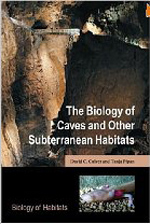 David C. Culver and Tanja Pipan
David C. Culver and Tanja Pipan
February 2009 | 256 pp. | 75 line & 20 halftone illus.
Find online ($40 and up)
Publisher's Description: The Biology of Caves and other Subterranean Habitats offers a concise but comprehensive introduction to cave ecology. While there is an emphasis on the organisms that dominate this unique environment, conservation and management aspects are also considered. The book includes a global range of examples and case studies from both caves and non-cave subterranean habitats; it also provides a clear explanation of specialized terms used by speleologists. This accessible text will appeal to researchers new to the field and to the many professional ecologists and conservation practitioners requiring a concise but authoritative overview. Its engaging style will also make it suitable for senior undergraduate and graduate students taking courses in cave and subterranean biology.
Each of the books in the Oxford Biology of Habitats Series introduces a different habitat, and gives an integrated overview of the design, physiology, ecology, and behaviour of the organisms found there. The practical aspects of working within each habitat, the sorts of studies that are possible, and habitat biodiversity and conservation status are all explored
Why I want it: I have yet to read a book from Oxford's Biology of Habitat series but they put out some interesting titles on strange and fascinating ecosystems. Other new releases from the series:
The Biology of Rocky Shores, Colin Little, Gray Williams and Cynthia Trowbridge
The Biology of Coral Reefs, Charles R.C. Sheppard, Simon K. Davy and Graham M. Pilling
7) Big Questions in Ecology and Evolution, Oxford University Press
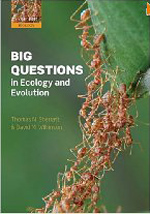 Thomas N. Sherratt and David M. Wilkinson
Thomas N. Sherratt and David M. Wilkinson
March 2009 | 336 pp. | 10 line & 45 halftone illus
Find online ($35 and up)
Publisher's Description: Why do we age? Why cooperate? Why do so many species engage in sex? Why do the tropics have so many species? When did humans start to affect world climate? This book provides an introduction to a range of fundamental questions that have taxed evolutionary biologists and ecologists for decades. Some of the phenomena discussed are, on first reflection, simply puzzling to understand from an evolutionary perspective, whilst others have direct implications for the future of the planet. All of the questions posed have at least a partial solution, all have seen exciting breakthroughs in recent years, yet many of the explanations continue to be hotly debated. Big Questions in Ecology and Evolution is a curiosity-driven book, written in an accessible way so as to appeal to a broad audience. It is very deliberately not a formal text book, but something designed to transmit the excitement and breadth of the field by discussing a number of major questions in ecology and evolution and how they have been answered. This is a book aimed at informing and inspiring anybody with an interest in ecology and evolution. It reveals to the reader the immense scope of the field, its fundamental importance, and the exciting breakthroughs that have been made in recent years.
Why I want it: Seems like a fun read that I can ultimately re-gift to a relative to help spur their interest in ecology and evolution.
8) Conservation Biology of Hawaiian Forest Birds, Yale University Press
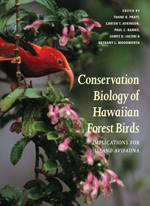 Edited by Thane K. Pratt, Carter T. Atkinson, Paul C. Banko, James D. Jacobi, and Bethany L. Woodworth
Edited by Thane K. Pratt, Carter T. Atkinson, Paul C. Banko, James D. Jacobi, and Bethany L. Woodworth
October 2009 | 728 pp. | 97 b&w and 32 color illustrations
Find online ($43 and up)
Product Description: Hawaii’s forest bird community is the most insular and most endangered in the world and serves as a case study for threatened species globally. Ten have disappeared in the past thirty years, nine are critically endangered, and even common species are currently in decline. Thane K. Pratt, his coeditors, and collaborators, all leaders in their field, describe the research and conservation efforts over the past thirty years to save Hawaii’s forest birds. They also offer the most comprehensive look at the reasons for these extinctions and attempts to overcome them in the future.
Why I want it: Appears to be a definitive text on one of the biggest and most interesting conservation challenges in the U.S.
9) The National Parks: America's Best Idea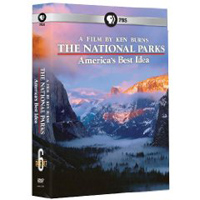 Ken Burns
Ken Burns
October, 2009 | 720 minutes | 6 discs
Find online ($70 and up)
Product Description: THE NATIONAL PARKS is the story of an idea as uniquely American as the Declaration of Independence: that the most special places in the nation should be preserved for everyone. The series traces the birth of the national park idea in the mid-1800s and follows its evolution for nearly 150 years, chronicling the addition of new parks through the stories of the people who helped create them.
Why I want it: Ok, so this is clearly not a book but possibly the highest profile conservation-themed commercial release of the year. I suspect that this series glosses over some of the less positive aspects of the U.S. National Park System, but nonetheless it's a piece of history that I would like to own.
--by Rob Goldstein


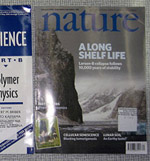

 Share Article
Share Article
Reader Comments